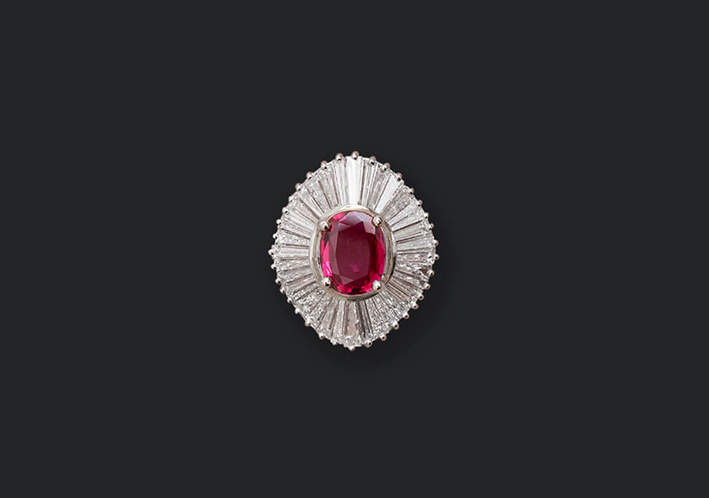Rubies are one of the most loved gemstones for centuries and are the gem of the month of July. But few know its true characteristics. Here is a quick guide to know all about rubies ♦
Bright, red, expensive: the rubies are one of the four minerals classified as gems, along with diamonds, sapphires and emeralds. Beware, though: they are very rare. They are often used other gems like ruby red but usually of lesser value. Have you ever wondered why it is called ruby? Simple: the name of the stone comes from the Latin word ruber, red. Want to know all about rubies?

What are. Dispelling a myth: not all rubies are just red. The color varies from red to deep pink. According to science, the rubies are a variety of corundum, a mineral composed of aluminum oxide. But from a chemical point of view the color red is induced by the presence in its interior of chromium. From a mineral point of view, the ruby is a relative of another precious stone: the sapphire, that is also a corundum. So much so that sometimes it is difficult to determine whether a gem is a ruby or sapphire. For example, a ruby with a color not too strong sometime is classified as a pink sapphire. The rubies are used in jewelry, but not limited to: the stones are very rare, almost like a diamond.

Look inside. Within a ruby you can find an asterism: this is a point bright three-or six-point or star that is caused by inclusions of rutile. This type of rubies is cutted into cabochons to display the effect of light. The asterisms are visible properly with a single source of light: they give a sense of motion and are much appreciated.

The provenance is important. The rubies are found in many parts of the world, but those of Mogok Valley, Myanmar (Burma) are the most prized for their intense red color. Rubies are also found in Thailand, Cambodia, India, Afghanistan and Pakistan. In Sri Lanka are usually light pink (pink sapphires are often classified). Small deposits of rubies are also found in Tanzania, Madagascar, Vietnam, Nepal, Tajikistan, and even in the United States. Today, however, Africa is the main source of rubies. An estimated 80% of the rubies come from Mozambique, mainly from the Gemfields mine. But other companies are also active, such as Fura Gems, which began auctioning gems in the last year, along with a third competitor, Gem Rock, which will soon enter the ruby auction market. However, Africa, as a source, has traditionally been despised by industry, especially for rubies: the most valuable gems, in fact, are those from Burma. But with Burmese rubies in short supply, African rubies from Mozambique, Madagascar and Tanzania are on the rise. Therefore, it is better not to focus on the origin: it is better to judge the value of the stone itself, whatever the origin.

How are. Weight, color and quality of the stone determines its value. First of all the color is important: those with a very intense and brilliant red are the most wanted. Their color is described as “pigeon’s blood”. Rarely rubies can also change color or submit an effect “cat’s eye”. It is also important to their degrees of clarity: a ruby without inclusions are very rare, especially over a certain size. A 10-carat ruby without any needle-like rutile inclusions (also called silk) may indicate that the stone has been treated, or is exceptional.

Treated or natural?It is precisely the imperfections, common in practically all rubies, that are used by gemologists to understand whether a stone has been treated or is a synthetic ruby. The treatment, in most cases, consists of heating the raw stone before it is cut. In fact, almost all rubies today are treated in some way, usually using the thermal method. This is why rare, untreated, good quality rubies fetch very high prices.Most rubies found on the market are heat treated to enhance the color, remove the purple hue, blue blemishes and inclusions. The gems are heated to temperatures around 1800 degrees Celsius (3300 fahrenheit). A ruby without needle-like rutile inclusions may indicate that the stone has been treated.

There are also famous gemstones that have been mistaken for rubies, such as the Black Prince’s Ruby set in the British Imperial Crown, which is actually a spinel, a gemstone that was often confused with ruby in the past. Another stone confused with ruby is rhodolite. The color of the ruby must be decided: if it is too light it is classified as pink sapphire (a stone which is always corundum), even if it is not clear what the chromatic boundary is between one gem and another.
















